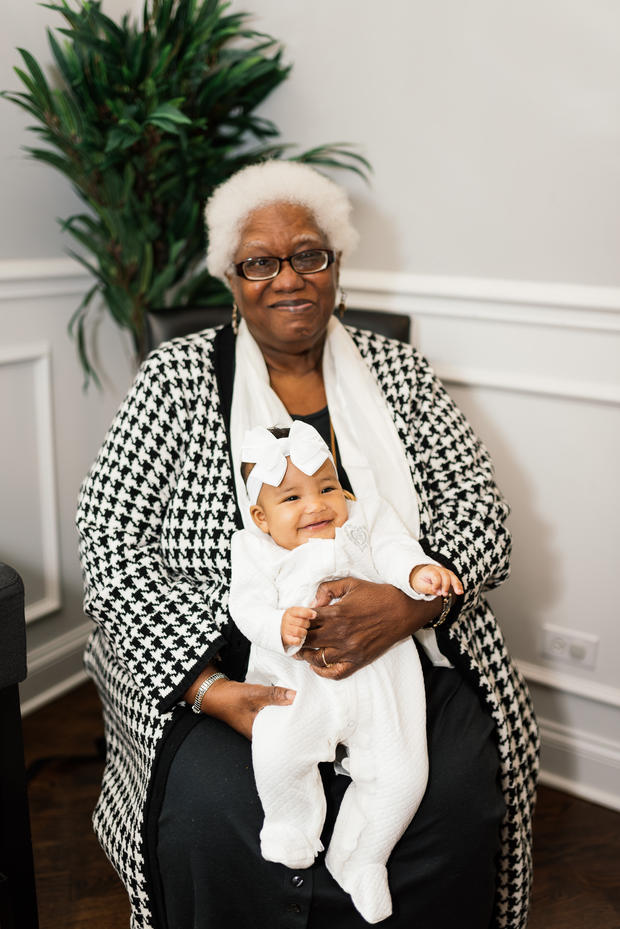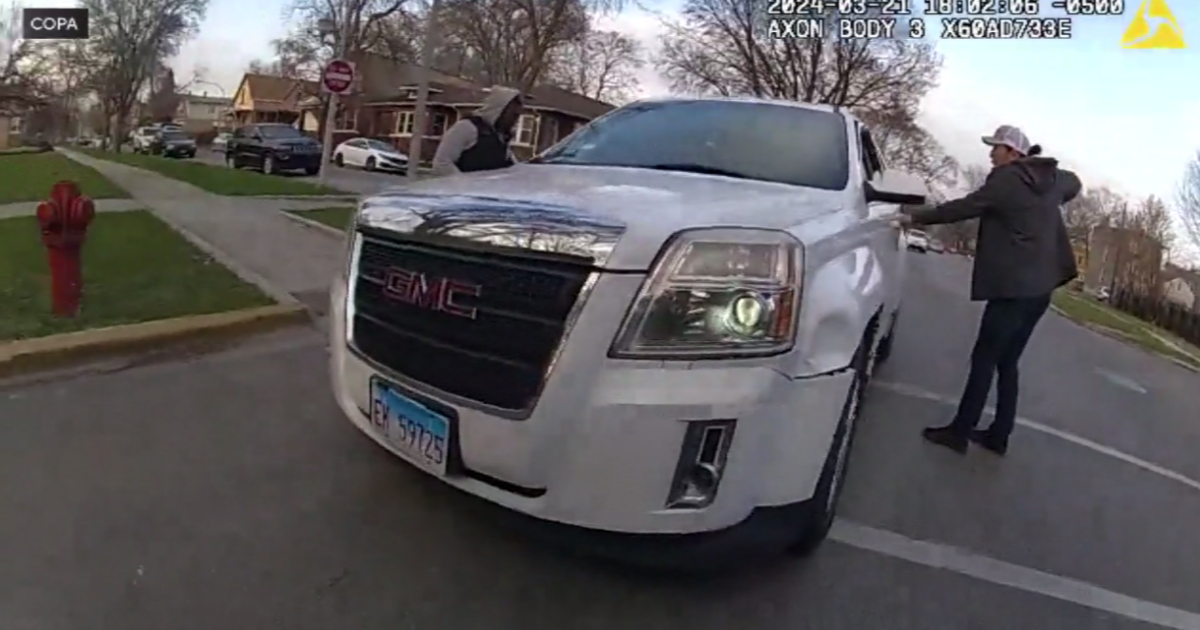How Lack Of Healthy Food Plays A Role In COVID-19 Deaths In Chicago's Black Communities
By Dorothy Tucker, Samah Assad, Carol Thompson
CHICAGO (CBS) — Last month, Rev. Marshall Hatch stood over his older sister's grave and led the family in prayer.
"It's a profound sense of loss for me," Hatch said. "She was the best sister ever."
Rhoda Jean Hatch, 73, died from complications stemming from COVID-19. Her brother said she battled asthma.
"She got weaker and weaker," he said. "And by the time they had to do the ventilator, she was on there eight days and never came out."
Rhoda lived and died in Austin – a predominately black community with the second highest number of coronavirus deaths. She is one of 61 people who died there, according to CBS 2 Investigators' analysis of Cook County Medical Examiner data.
Austin is second only to the South Shore neighborhood – also majority black – where 81 people have died.
Of the more than 1,100 people from Chicago who died, 47 percent are black, as of May 12.
Like Rhoda, many of those who died in predominantly black communities had underlying health conditions. Chronic illnesses make victims more susceptible to the virus, worsen the risk of death and disproportionately affect black Americans.
A lack of access to healthy food can contribute to these underlying health conditions, ultimately worsening the communities' chances to fight off diseases like coronavirus. Historically, it has been minority communities who suffer the most from these disparities, said Dr. Mercedes Carnethon, an epidemiologist with and Vice Chair of Northwestern's Department of Preventative Medicine.
"What has been historically available in our communities has set us up for obesity, high blood pressure and diabetes," Carnethon said.
To learn how Chicago is impacted, CBS 2 analyzed underlying conditions of those who died as well as access to healthy food. We found some of the neighborhoods hardest hit are those with deaths linked to underlying health conditions, as well as fewer options for healthy food.
CBS 2 has been mapping and tracking COVID-19 deaths Austin, South Shore, Englewood, Auburn Gresham and Chatham since March as they were originally the top 5 neighborhoods with the most deaths.
While Englewood, Auburn Gresham and Chatham continue to see an increase, Austin and South Shore are the two that continue to top the list. Because of this CBS 2 honed in and analyzed data on the underlying health conditions of those who died in those two communities.
We found:
- Austin: 73 percent of those with underlying conditions had high blood pressure; 51 percent had diabetes.
- South Shore: 70 percent had high blood pressure, 41 percent had diabetes. Many more had more than one chronic illness.
"It just so happens within the course of this severe pandemic, those are the exact conditions that are leading people to have worse outcome form the COVID-19 infection," said Carnethon, who studies medical trends in minority populations.
She also pointed to the "alarming" way unhealthy food is marketed to African Americans and the few healthy food choices available in neighborhoods.
A recent survey released by the Urban Institute found 1 in 5 U.S. adults experienced food insecurity in the early weeks of the pandemic and did not have access to a nutritional diet – especially in minority communities.
Disparities in healthy food access in Chicago are not surprise to city official. In 2013 the city identified food deserts across the city, underscoring a lack of access to healthy options. Former Mayor Rahm Emanuel announced a "goal of completely eliminating food deserts for Chicagoans by 2020."
But CBS 2 mapped and analyzed major grocery stores in some of the neighborhoods hardest hit by the pandemic and found that's not the case. There are still glaring disparities in access to healthy food – both in quantity and distance.
There are only three major grocers in Austin, which has a population of nearly 88,000 people and is 88 percent black. From the center of the neighborhood, it would take a resident approximately 2 miles to get to each of them.
In contrast, Lakeview, with nearly the same population but 77 percent white, has nine major grocers, including three Jewel-Osco locations. A resident would need to walk just four blocks to the nearest store, which is a Target location.
Toggle through the maps using the arrows below to explore neighborhood level data including deaths, median age, income, jobs and access to major grocery stores. Click the info button for more about each map and the legend.
Chicago COVID-19 deaths by neighborhood
You can explore black population percentages, coronavirus deaths, median income and median age across neighborhoods in the map below by zooming in and clicking on each point or neighborhood. Click the arrow at the bottom of the map to switch to a new map. You can also click the button at the top for more information about each map.
We also looked at the South Shore neighborhood, which has a population of approximately 52,000 people and is 94 percent black. With three grocery stores, the closest is a Save A Lot about a mile away from the center of the community. Edgewater, with a population of approximately 49,000 people and 50 percent white, has six grocery stores including a Whole Foods and two Jewel-Osco locations. It's closest store is a Whole foods about a half mile away.
Mayor Lori Lightfoot committed to addressing food accessibility and disparities in COVID-19 deaths through the creation of the Rapid Equity Response Team – a group of community leaders tasked with finding solutions. She highlighted specific plans to target neighborhoods seeing the highest levels of disparities in deaths – also those with severe issues with underlying health conditions.
"We know this is a problem," Lightfoot said. "Food is at the top of the list. We gotta get this problem solved."
In response to the pandemic's disproportionate impact on black communities, Lightfoot launched the Racial Equity Rapid Response Team. The group is tasked with narrowing the gap in testing, health care and food access disparities.
Many of the efforts are being focused on the Austin, Auburn Gresham and South Shore neighborhoods – some of the communities that CBS 2 first reported were the hardest hit by deaths.
The city's Emergency Operations Center will coordinate and develop strategies to better connect with community residents and provide resources. This includes mask distributions and collaboration with universities and hospitals to expand testing.
The city is also working with local hospitals to reduce underlying health conditions in vulnerable communities. The first of weekly updates from the group is due today.
There is a pop-up healthy food pantry in Austin every Thursday through June 18 from 10 a.m. to 1 p.m. at 415 N. Laramie. Residents can walk or drive up. Food boxes and fresh produce will be given away on a first come, first served basis while supplies last.
Every Friday, there will be a food distribution in South Shore at 2423 E. 75th Street for the next five weeks. South Shore Works is seeking volunteers to help.
Campaign "Feeding the South Shore" aims to feed more than 1,000 families in the community. Every Tuesday through June 2, Local Market will prepare fresh groceries to be delivered to designated locations for at-risk residents, including seniors, low income families and students free of charge.
Primary delivery locations, starting at 9 a.m. every Tuesday:
- Senior Suites, 2355 E. 67th St.
- Family Rescue, 6822 S. Ridgeland Ave.
- Good Shepherd Manor, 6720 S. Cornell Ave.
- O'Keefe School of Excellence, 6940 S. Merrill Ave.
- The Parkways, 6718 S. East End
- Montclare Senior Residence, 1200 E. 78th St.





